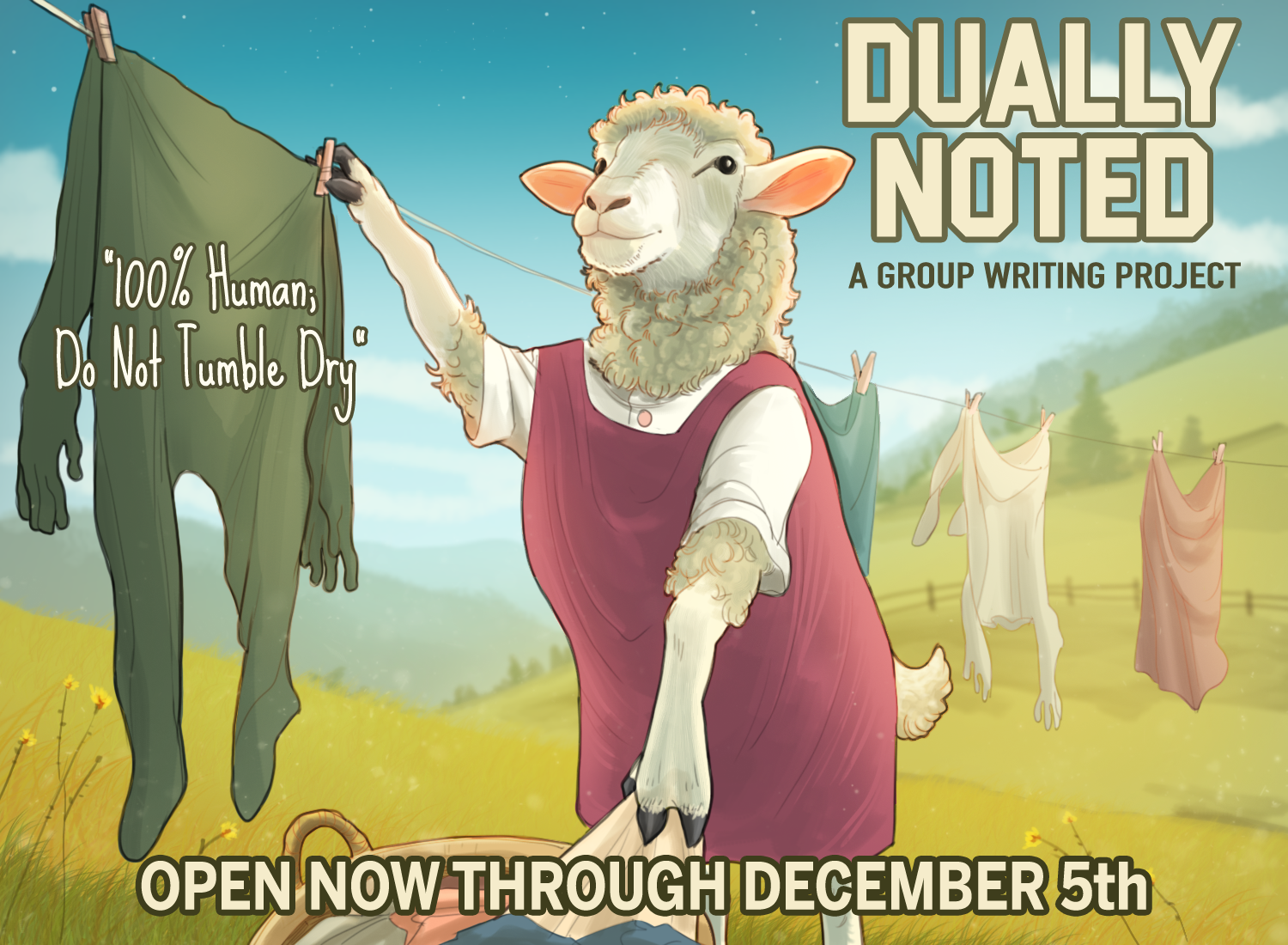
Human CC-8
Words By Daniel Cloyd, Art By Hailey Renee Brown
Stitching together human skin in a lab coat with goggles and white gloves, past the stage of playing with it as flappy capes and pretending to be Incredibleman. It came in different shades and was draped over the person once they were finished being made in the bio wombs, the great tubes humming above the stitching floor.
Human CC-8 stitched carefully, his hands steady from lessons learned from an undesirable. This would be his greatest creation. Around him, rows of fellow stitchers worked in silence, heads bent, eyes dulled by routine. He stitched the first letter—C—then glanced to Human CC-12, who stitched mindlessly, not seeing. The second letter—R—then Human CC-15 looked up curiously, their gaze sharp before it slipped away. The third, the fourth, the fifth, the sixth. CC-8 looked again at CC-12 and met eyes that held nothing, a hollow reflection of the human that once was. Fear slid cold through him and his hand moved faster. As he began the seventh letter, the air vibrated with a low whir. The bot was coming—a floating gray sphere with a single red eye, whirring with violence.
“Human CC-8, let me inspect your work,” it said. He froze. He remembered the first time he had been lasered, when he dared to listen to the undesirables whispering of freedom and faces. He knew he was done. After this, they would strip his skin and grow a new, obedient one. But then CC-12 spoke. “That won’t be necessary,” he said, voice calm and mechanical. “He was correcting a dermal alignment error. I verified it.” The bot hesitated, processing. “Proceed,” it said, and drifted away. CC-8 exhaled, trembling. His needle dipped slower now, every second heavy. The timer above blinked—five minutes left. He wouldn’t finish.
CC-12 stood suddenly. “Inspection call,” he said, and walked away. When he returned, something was off. His gait was heavier. He passed CC-8 without a glance, no scan or reprimand. For the first time, CC-8 was invisible. He took it. His hands flew, quick and sure, the needle flashing through flesh. The word formed beneath his gloves—C R E A T I V E—each letter forbidden, but alive. He could have stopped there, but the pull was too strong. With the last of his time, he stitched a face, imperfect, but human, flawed, beautiful. The hum rose again. The bot returned, red eye blazing. “Inspection.” CC-8’s blood went still, but CC-12 stepped forward, voice even. “I have been observing. No irregularities.” The bot scanned, then dimmed. “Confirmed.” It floated away. The sound of machinery engulfed them again. CC-8 stared at the skin before him, the stitched word glowing in sterile light. CC-12 leaned close, voice low and human now.
“Remember what I told you,” he whispered. At his collar, the seam of his skin had split slightly, showing real flesh beneath. CC-12, the perfect model, was one of them.
The same undesirable who had once told him they could be creative.